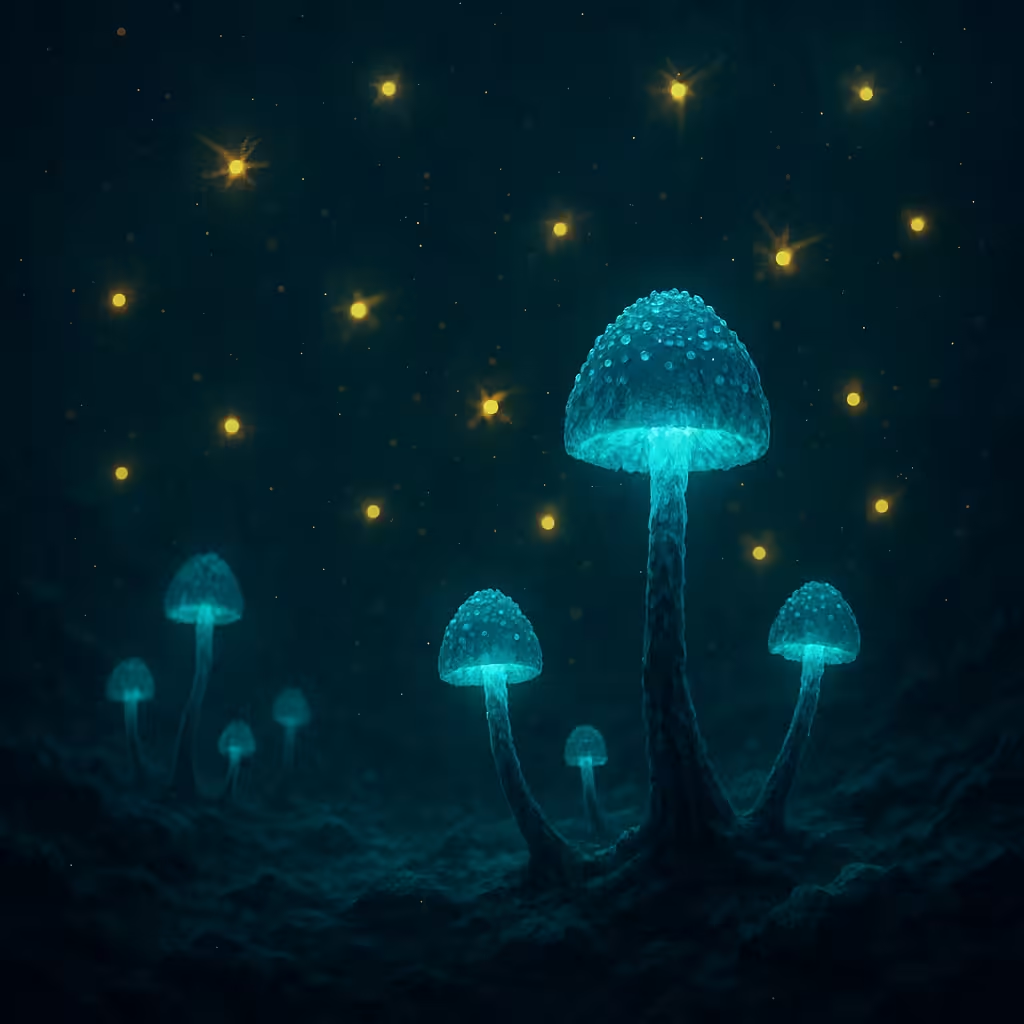
Bioluminescent Tricksters of the Deep: How Mariana Trench Fungi Mimic Fireflies to Survive
Deep beneath the surface of the Pacific Ocean, in one of the most hostile and enigmatic environments on Earth—the Mariana Trench—life is not only surviving, but evolving in mind-bending ways. Scientists have recently made a groundbreaking discovery: certain species of fungi thriving in this inky abyss exhibit a remarkable and unexpected trait—bioluminescence that mimics firefly light patterns. This discovery is more than a curiosity. It could fundamentally reshape our understanding of evolutionary biology, ecological communication, and the very limits of life.
Let’s dive into what makes this revelation so astonishing, and why these glow-in-the-dark fungi may be some of nature’s cleverest illusionists.
Life Where It Shouldn’t Exist
The Mariana Trench reaches depths of nearly 11,000 meters (36,000 feet), where crushing pressures exceed 1,000 times the atmospheric pressure at sea level, temperatures hover just above freezing, and sunlight is completely absent. For decades, scientists believed these extreme conditions made complex life forms nearly impossible to sustain. But research expeditions using deep-sea submersibles have steadily uncovered an alien-like world teeming with unique organisms: shrimp-like amphipods, snailfish with translucent skin, and now—strangely—fungi.
These fungi weren’t just surviving; they were thriving in an ecosystem devoid of light, adapting to pressures that would pulverize most surface organisms. But the most incredible trait of all? They glow.
Not Just Any Glow—A Perfect Mimic
Bioluminescence is not rare in the ocean. In fact, it’s one of the most common forms of communication in the deep sea. Anglerfish, jellyfish, and certain bacteria all emit light for purposes such as attracting prey, mating, or camouflage. However, the light emitted by these newly discovered fungi wasn’t random or chaotic. Researchers found that their glow followed very specific pulsing patterns, eerily similar to the rhythmic flashes of terrestrial fireflies and other bioluminescent insects that use light to communicate during mating rituals.
What’s particularly mind-blowing is that there are no fireflies at the bottom of the ocean. So why would fungi mimic them?
Theories Behind the Mimicry
There are three leading hypotheses that attempt to explain this bizarre evolutionary trait:
1. Predation Lure
One possibility is that the fungi are using their flashing displays to lure deep-sea creatures, much like an anglerfish dangles a glowing bait. Small fish, crustaceans, or planktonic animals may be drawn to the seemingly familiar light signals. Once close, the fungi may not consume them directly, but instead benefit from their proximity—either by being carried to new locations or by feeding on the waste and debris these animals leave behind.
2. Symbiotic Dispersal
Another theory suggests that these fungi form symbiotic relationships with mobile deep-sea species. By mimicking an enticing signal, the fungi attract animals that inadvertently pick up spores on their bodies or in their guts. These spores are then transported elsewhere in the trench or even to entirely new deep-sea ecosystems, ensuring the fungi’s dispersal and genetic diversity—a vital strategy in a region where movement and reproduction are exceptionally challenging.
3. Cross-Biome Mimicry
The most speculative, yet fascinating, idea is that this mimicry may represent an evolutionary echo—a convergent trait that emerged independently in an isolated environment. Some scientists propose that fungal ancestors, long since separated from their terrestrial relatives, retained or re-evolved light-emission mechanisms that mirror those found on land. Through some unknown genetic conservation or horizontal gene transfer, the fungi developed the ability to flash in insect-like rhythms. The deeper implication? Evolution may not be as linear or isolated as we think.
A Communication System in the Dark
These fungi may also be communicating with each other. Just as fireflies flash in unison to attract mates or coordinate behaviors, it’s possible the Mariana fungi use light pulses to coordinate spore release, synchronize growth cycles, or send chemical signals. In a place where sound doesn’t travel well and sight is practically useless, light becomes a language.
If verified, this would mark the first known example of a fungal species using patterned bioluminescence as a communicative tool, not just a static glow.
Implications for Astrobiology and Synthetic Biology
This discovery doesn’t just blow open our assumptions about fungi or marine biology—it has vast implications for astrobiology and synthetic bioengineering.
If complex signaling and mimicry can evolve in the crushing blackness of Earth’s deepest trenches, it boosts the possibility that similar life systems could exist in the subsurface oceans of Europa or Enceladus—moons of Jupiter and Saturn, respectively, that are covered in ice but believed to have liquid oceans below. These alien oceans could foster extremophilic lifeforms, perhaps even ones that communicate with light, just like these fungi.
Moreover, understanding how these fungi generate such efficient bioluminescence in high-pressure, low-energy environments could inspire breakthroughs in bio-luminescent materials, medical imaging, or sustainable lighting technology.
A Window into Evolution’s Playbook
Nature is often thought of as opportunistic, adapting organisms to exploit every niche. But in this case, it seems evolution has taken a more creative approach—copying a land-based signaling system to suit a deep-sea fungal need. This kind of evolutionary mimicry across domains and ecosystems is rare, and nearly unheard of in such primitive organisms.
It challenges our assumptions about the separation between terrestrial and marine evolution, between insects and fungi, and even between what is considered intelligent biological behavior.
Are these fungi merely mimicking patterns through random mutation and selection? Or is there something more intelligent in the algorithm of survival, encoded in nature’s most extreme outposts?
Final Thoughts: Light in the Abyss
This revelation isn’t just about glowing mushrooms at the bottom of the ocean—it’s a reminder of how little we know about our planet, and how much wonder still waits beneath our feet. The Mariana fungi force us to reconsider not just the limits of life, but the creativity of evolution itself.
They show that even in the darkest corners of the Earth, life finds a way not only to survive—but to communicate, to trick, and to shine.
🌌 Have scientists only just begun to scratch the surface of the deep biosphere’s hidden intelligence? Could these fungi be a missing link in understanding communication between life forms, regardless of species or domain?
Let us know your thoughts in the comments below—and keep watching the deep. It just might blink back.

